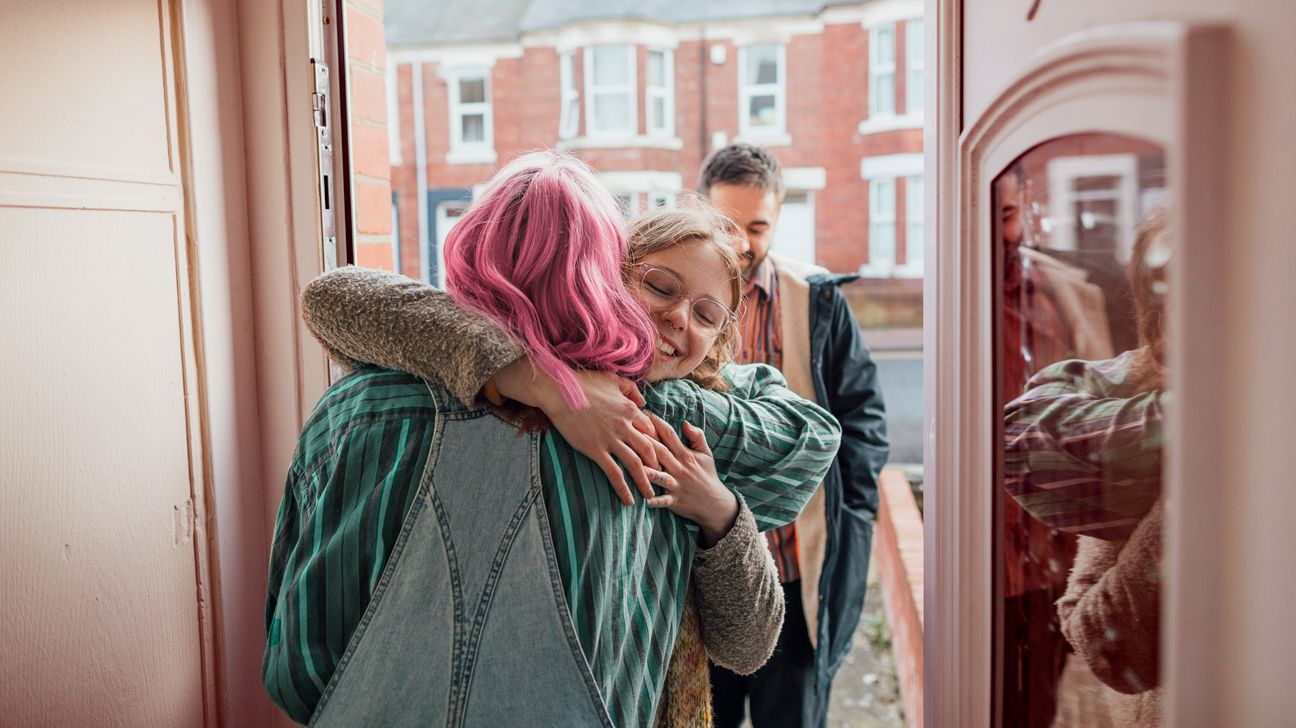Bisexuality isn’t one-size-fits-all. One person’s definition may be different from another. So, the question “what is bisexual” can be answered in different ways. And, as with anything new or unfamiliar, fear and stigma tend to follow. So let’s clear things up.
If you think bisexuality is just about liking boys and girls, buckle up. It’s time to say good-bi to the myths and hello to facts.

You betcha. Bisexuality is commonly thought to suggest having equal attraction to multiple genders. Which is true for many peeps! But, research shows lots of bisexual people prefer one gender over another. And that’s still considered bisexuality.
The term bisexuality actually dates back to the 1880s, but wasn’t really recognized as a sexual orientation term until the 1960s when bisexual folks played a role in the Lesbian and Gay Civil Rights Movement.
Nope! You do you. You can choose a binary and a nonbinary approach to bisexuality. Binary means a person identifies as male or female, while nonbinary means a person identifies as something other than male or female.
So a bisexual woman could be attracted to women and nonbinary folks (a gender other than her own).
Sure can. When defining bisexuality as attraction to “more than one gender” rather than “men and women,” bisexuality can apply to a number of gender identities.
If someone doesn’t identify as any gender (aka agender) and is attracted to other agender folks, transgender peeps, and nonbinary babes then they may also identify as bisexual.
Heck no! How bisexual peeps are attracted to other genders is unique to them. A bi man might date a woman, then break up and date a man, then break up and date a woman again.
A bisexual person could also only date different genders, but still be attracted to the same gender.
Yep. Some folks who identify as bisexual only date cisgender men or women. A cisgender person identifies as the gender they were assigned at birth based on their sex (what’s between your legs).
You sure can. A transgender person identifies as a gender they weren’t assigned at birth. Being trans is a gender identity and doesn’t define who you’re attracted to.
Transgender folks may identify as bisexual if they’re attracted to their own gender and genders other than their own. The definition doesn’t change because they’re not cisgender.
Yes. Again, bisexuality doesn’t have to mean equal attraction to more than one gender. You can be bisexual and more attracted to one gender. Studies on bisexual relationships actually support this and that preferred genders can change overtime.
It depends on how you want to define your sexuality (remember: you can change your mind).
A bisexual woman in a seemingly straight relationship with a man can still be attracted to other genders. A person can also identify as bisexual and never have a sexual relationship with the same or different gender. It’s not up to other folks to police who can and can’t identify as bi.
Biromantic refers to romantic attraction to the same gender and different genders. Bisexual is typically based on sexual attraction. However, a person can still identify as bisexual and have sexual attractions and emotional connections.
You bet. You can actually identify as bisexual and biromantic. Some call this cross orientation, where you’re romantically attracted to one gender and sexually attracted to another.
Yes. Bisexual folks can have monogamous relationships or polyamorous relationships. Being attracted to more than one gender doesn’t mean someone can’t be monogamous. But it also doesn’t mean a poly relationship is out.
No. Bisexuality is an identity all its own. In fact, bisexuality represents the majority of the LGBTQ+ community.
According to a study from The Movement Advancement Project, bisexual folks represent 52 percent of the community in contrast to 32 percent of people identifying as gay and 17 percent as lesbian.
Of course! How you label your sexual orientation is up to you. Who you may be attracted to at 18 may not necessarily be the same as who you’re attracted to at 55. Bisexual may feel good to you as a definition at 25 and queer may feel right at 32.
Both bisexuality and pansexuality are sexual orientations with attractions to more than one gender. There’s a distinct difference between the two identities though they often overlap.
Bisexuality is about attraction to one’s gender and genders other than one’s own while pansexuality is an attraction to all genders. People who identify as pansexual may not consider gender in their attraction to someone.
Forget gaydar, there’s no test to get into club bi. Others can’t police who can and can’t identify as bisexual, your sexual identity is up to you.
And, if you aren’t sure, that’s OK. You don’t have to have it all figured out, and you don’t owe anyone an explanation.
Bisexuality doesn’t mean the same thing to everyone. If you’re in the process of figuring out your own identity, show yourself some kindness. It’s OK to not have an answer.

